Metaverse Myths, Facts, And L&D Benefits
While many of us spent the past two years switching up our Zoom backgrounds, others were enjoying the sights, sounds, and atmosphere of a completely different world.
I'm not talking about interplanetary travel—yet. I'm talking about the metaverse.
From gaming to concerts, commerce, and even a multimillion-dollar real estate market, the metaverse has become a major source of headlines (and inspiration!) for artists, brands, and entrepreneurs. It's not just a pandemic-era fad, either: People have been imagining and designing proto-metaverse experiences for well over a century.[1] In the past 15 years, the metaverse has become a source of person-to-person connection, a maker's space, and even a virtual vacation destination.
At this point, you might be wondering, "What's in it for L&D?"
I started with the same question—and I took it to my friends on SweetRush's XR and Immersive Technology team. Here's a condensed version of what they taught me about the language, logic, and learning potential of the metaverse. (Want the full travelog? Check out our eBook, Ready, Learner One? The L&D Innovator's Gateway To Immersive Learning and the Metaverse!)
What Is The Metaverse?
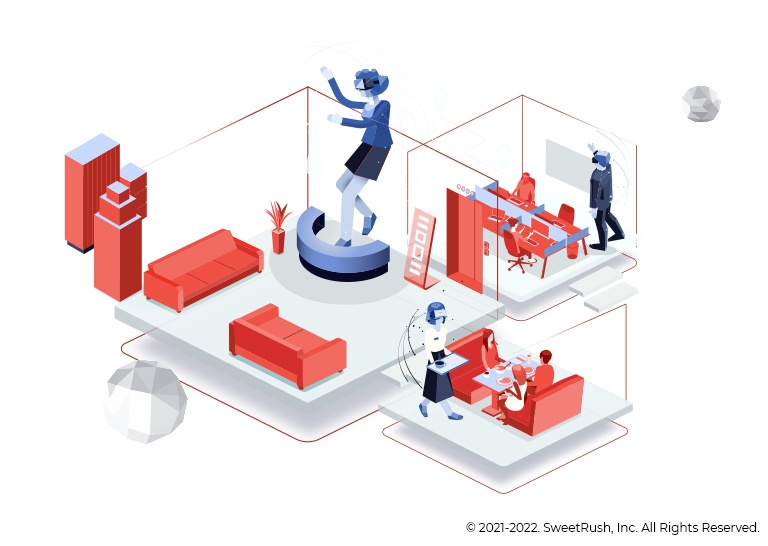
In short, it's a "shared, computer-generated world in which people socialize, work, and play" [2]—and, yes, learn.
In other words, it's "the internet, but also a spatial (and often 3D), [usually] game engine-driven collection of virtual environments." [3]
Ready to get more technical?
These virtual environments "can be experienced synchronously and persistently by an effectively unlimited number of users with an individual sense of presence." [4]
Though you might be most familiar with Metaverse (capital "M") by the artists formerly known as Facebook, there are other metaverses (small "m"), including Fortnite, Roblox, Horizon, and even a few corporate metaverses. Going forward, I'll use metaverse (small "m," singular) to refer to these immersive worlds in general.
A metaverse can use elements of augmented reality, virtual reality, or both. (See "The Immersion Continuum" below.)
The Immersion Continuum: Augmented, Virtual, Extended, And Mixed Reality
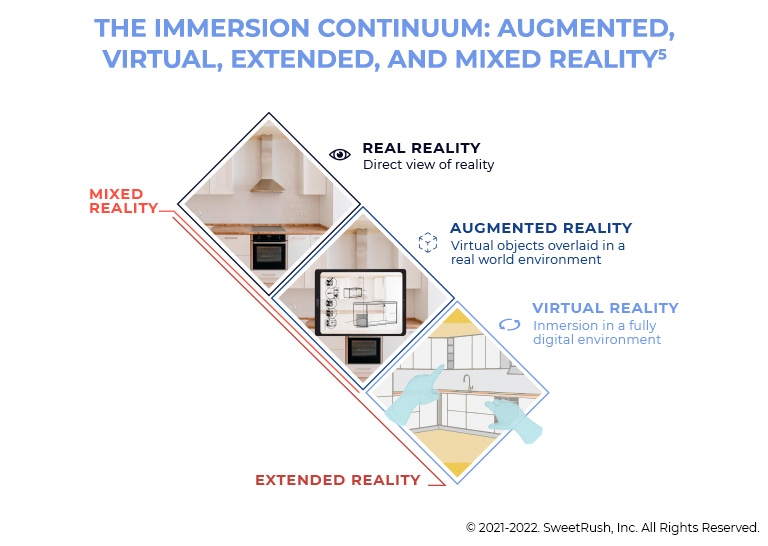
Real reality (RR): Nope, that's not a typo! RR is the non-digital world we experience directly, without smartphones or headsets.
Augmented reality (AR): A filter that displays digital objects in our real-life surroundings. AR experiences include Wayfair's View Furniture in Room, Warby Parker's Virtual Try-On, Instagram photo and video filters, and, of course, Pokemon Go. We often access AR experiences through our smartphones.
Mixed reality (MR): An experience that lays digital objects over our real-life surroundings and allows us to interact with them—through a headset that usually leaves our hands free. In MR, we can drop that new couch into our living room and layer new colors and textures onto our walls and floors. These same "covers" can even turn furniture and fixtures into scenery for a 360° gaming experience.[5]
Virtual reality (VR): An immersive, 360° experience completely created with spatial audio and computer-generated imagery (CGI), 360° video footage, or still images. We access a VR space through a headset and perceive it instead of our real-life surroundings. We might interact with it hands-free or use controllers. (For safety, many headsets ask users to define a "playspace"!) The games Beat Saber, Eve, and Rec Room are examples of VR experiences, as are the meeting spaces Horizon Workrooms and SweetRush's own TreeHouse.
Extended reality (XR): Any of the above, except for RR! The umbrella term XR covers every possible mixture of digital environments: AR, MR, and VR.
How Do I Get To The Metaverse?
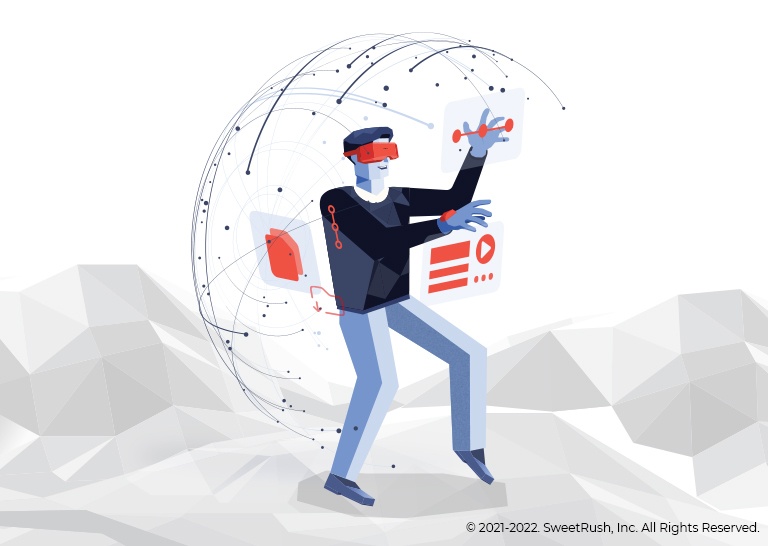
There are a few ways in; you can get there through a:
- VR headset
- Smartphone
- Desktop or laptop computer, using a keyboard and mouse to navigate
What Can I Do In The Metaverse?
Besides playing games, you can:
- Work out
- Meet up with friends and family
- Attend a concert or other live event
- Experience hard-to-reach environments all over the universe
- Meet new people with common interests
- Shop in a truly epic mall
- Start a business
- Make and sell art
- Build and sell virtual real estate
- Learn a new craft and skills
- Meditate
The metaverse doesn't have to be all play: A recent study by Microsoft found that more than 50% of workers of all generations are "open to using digital immersive spaces in the metaverse for meetings or team activities." [6]
Characteristics Of The Metaverse
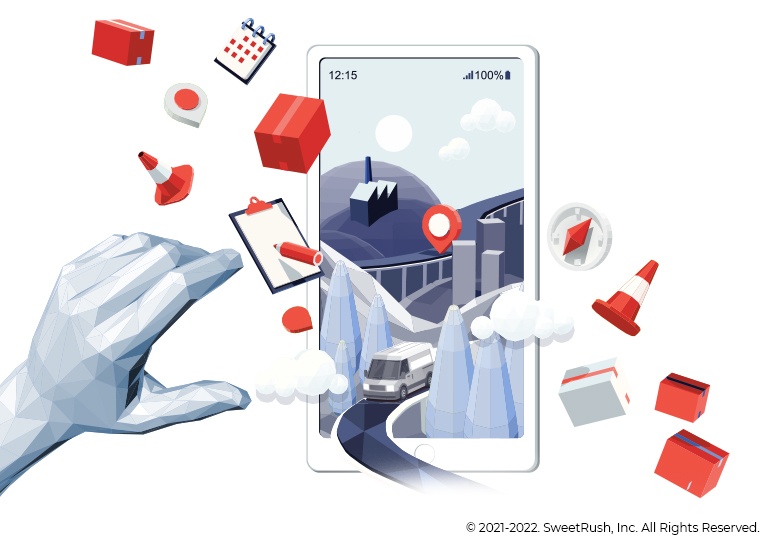
Right about now, you're probably wondering what it's like to be in the metaverse. And though this digital space can be wild and wonderful, it offers a few characteristics you'll recognize from everyday life.
Persistence: Objects stick around even when there's no user to experience them.[7] That means that digital attractions are:
- Mapped to a real-world space (like a public park) and
- Still there after you leave
Synchronicity: Users can interact in real time, in unlimited numbers.
A fully functioning economy: Blockchain technology facilitates in-world purchases and sales of experiences, art, and even premium real estate.[8]
User-created content: Users can create digital art, experiences, buildings, and services—and earn real currency if they put these items on the market.
Continuity: You're the same person from one day to the next, with the same digital possessions, accomplishments, and relationships. That means your party invites, impulse purchases, and the virtual mansion you built from scratch are indelible parts of your history.4 Bonus: Continuity creates good data that yield information that L&D folks can apply to assess progress toward business and learner needs.
Digital twins:
- Your digital twin (also known as a digital self) isn't a nefarious alter ego; it's a consistent avatar that serves as a means of interacting with the environment and other users—and provides consistent in-world identity and presence.
- Your organization's digital twin is a consistent digital space that duplicates or enhances its physical presence.
Metaverse Myths
Myth: The term "metaverse" applies to any online collaborative environment, including email and chat.
Fact: There are two absolute requirements for a metaverse:
- A digital self, or digital twin, who represents the user and interacts with others (see above)
- A live social component
It's this digital self and "human-ness" that qualify immersive environments like Fortnite and Roblox as metaverses. Chat and email alone can't offer those qualities.
Myth: Virtual reality (VR) and augmented reality (AR) are the metaverse.
Fact: VR and AR can play an important role in a metaverse. I say "a" metaverse because another misconception is that there is just one single metaverse; again, not true. There are, and can be, an infinite number of metaverses. In the end, one or a few will likely emerge as the most popular ones, but they won't be the only ones.
Myth: The metaverse is just a new fad.
Fact: Not at all![9] Science fiction authors have been imagining metaverse-like digital environments since 1935, and innovators began developing proto-immersive digital experiences in the mid-1950s. Metaverse development has been rapidly accelerating since the 2010s, thanks to advances in technology and new immersive games and experiences.[10]
The Future Of L&D: Immersive Learning In The Metaverse
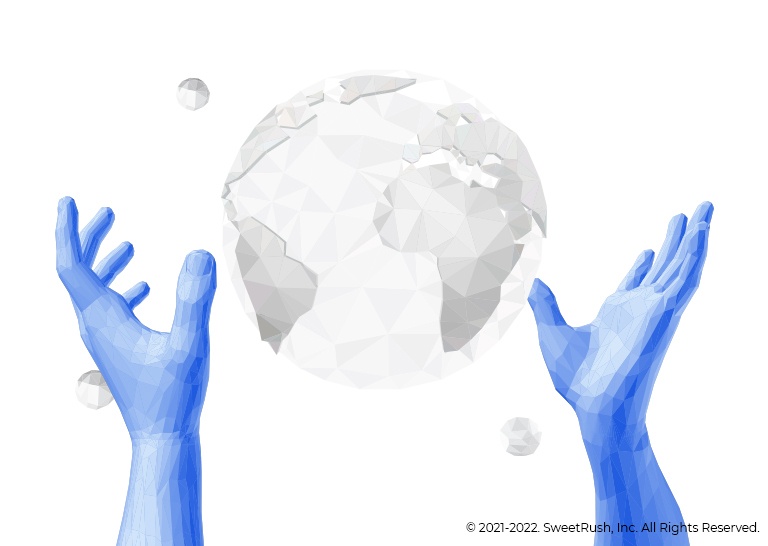
There's no question that the metaverse is cool. But can this virtual venue help us learn?
In a word, yes! Here are just a few of the unique benefits of learning in the metaverse:
- Transference: Learners are immersed in a digital twin of their actual work site. As complex situations unfold around them, they have only a split second to choose the right tool for the job. Whether those tools are cognitive, emotional, or mechanical—or a mix of all three—they think, act, and make decisions just as they would in their daily work.
- Retention: Every L&D leader is familiar with the forgetting curve: the plummeting of skills and content recall with time. Solving complex problems in a digital twin of their work site helps learners develop the cognitive and muscle memory they need to retain their skills long term.
- Minimal distractions: Whether your learners are remote, on-site, or hybrid, distractions are a fact of life—and a major obstacle to learning. Skilling in the metaverse and other immersive environments separates learners from their ordinary world, which helps them filter out distractions and concentrate on the content being presented.[11]
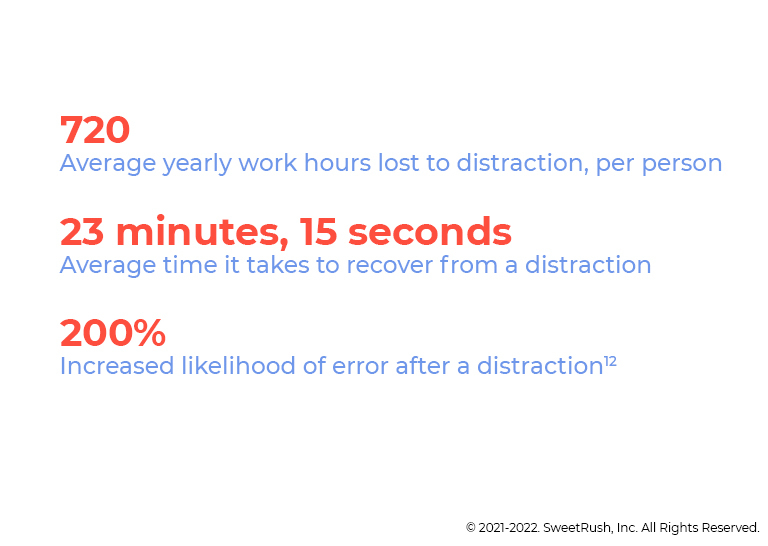
Joy: Unlike traditional eLearning or instructor-led learning experiences, immersive learning is built for—and upon—connection, gameplay, exploration, and storytelling. With ample space, resources, and opportunities, learners can literally follow their curiosity. It's the ultimate "pull" learning experience and a major win for employee engagement.[13]
Abundance: From limited editions to members-only events, we've all heard of manufacturing scarcity. Learning in XR helps us open access to hazardous, hard-to-reach, hard-to-replicate, or otherwise scarce experiences for more people.[14]
Immersive Learning: The Human-Centered Choice
At SweetRush, we believe that L&D leaders have the unique ability to offer learning and skilling solutions that help people elevate their craft and prepare for the future of work.[15]
When we offer immersive learning experiences, we empower learners to spend their limited time, attention, and energy meaningfully—and gain the skills and confidence that help them work productively and rewardingly.
We're so glad you're curious about how immersive learning can help you make an impact in your organization—and we'd love to share more!
That's why we've created an L&D-exclusive journey through XR technology, needs analysis, and L&D use cases for immersive learning in the metaverse and beyond. Whether you're just starting out or already an expert, our eBook, Ready, Learner One? The L&D Innovator's Gateway To Immersive Learning and the Metaverse, will help you fuel conversations and advance your learning solutions for light-years to come.
References
- A Short History Of The Metaverse
- David J. Chalmers, Reality +: Virtual Worlds and the Problems of Philosophy (New York: W. W. Norton & Company, 2022).
- Aaron D. Frank, "How to Explain the Metaverse to Your Grandparents," Medium, January 9, 2022.
- Matthew Ball, "Framework for the Metaverse," The Metaverse Primer, MatthewBall.vc, June 29, 2021.
- Google Has A New Favorite Phrase–Here's What It Means
- Great Expectations: Making Hybrid Work Work
- Persistent AR Explained: Why It's the Key to the Metaverse
- Snoop Dogg is developing a Snoopverse, and someone just bought a property in his virtual world for almost $500,000
- Current Trends In Learning And Development & Learning Experience Design
- A Short History Of The Metaverse
- Jacquelyn F. Morie, "The Promises and Challenges of Immersive Education," Handbook of Research on the Global Impacts and Roles of Immersive Media (Hershey, PA: IGI Global, 2020), pp. 349–370
- Workplace Distractions Statistics: Problems and Solutions in 2022
- Be Our Guest: A Service Design Approach To Learner Experience
- Azeem Azhar, "The Meaning of Life in the Metaverse (with David Chalmers). HBR Presents: Azeem's Exponential View," Podcast audio, March 23, 2022.
- It's All About Your People! Embracing Human-Centered Business, Workplace Culture, And Learning Design



